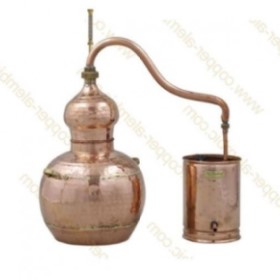Vodka
One of the most enquired spirits production tips is for vodka, so first of all, have in mind that there are 4 steps to have in consideration.
- Fermentation
- Distillation
- Dilution
- Filtering
Although vodka can be obtained from anything that has fermentable sugars, it's commonly based in grains or potatoes.
What to have in mind?
Purity and stripping away any flavour
1. Fermentation requires fermentable sugars that can be obtained from wheat, rye, maize, barley, mixed grains, potatoes, molasses other fruits or vegetable source. Grapes/Wine can be rectified through distillation until removing all the flavours and odours creating a fresh and smooth taste.
2. Once a fermentation process ends and no matter what the raw material was used, it's distilled multiple times up to 95% alcohol. From at least 10% ABV, the wash is raided to a boiling point of 78 degrees Celsius. As it is more volatile than water, the alcohol vaporizes first so you need to control the temperature to achieve the most of the distillation process. It is worth mentioning that the congeners have different boiling points so it's important to cut the heads and the tails of the distillation once you want to achieve the final result.
Depending on the source, you can use:
Soldered moonshine copper alembic still with sieve tray (to avoid burnt sugar in the bottom of the pot) and a thermometer soldered to the swan neck to control the temperature and get the most of the distillation at all times. Multiple distillations will grant you the % of alcohol necessary to get all the flavours stripped away.
Additionally you can use a refining lentil to cut the number of distillations needed to achieve the 95% alcohol. Experienced distillers can achieve 95% in a single run using 3 refining lentils.
Reflux Column & Soldered Moonshine Copper Alembic Still, as we mentioned before, purity is one of the most important points to have in mind, so the reflux column manages to get the higher alcohol volume from a single distillation run, redistilling will produce a purer and higher % of alcohol.
3. Once you get all the flavours and odours stripped away from the alcohol you'll have to reduce the % ABV and achieve the desired / common proof of the Vodka, around 80 proof or 40% ABV.
If 40% is alcohol, the remaining % has to be the purer and cleaner water available. No adding of any botanicals or oak maturation, just water and the recently distilled alcohol.
4. Additionally distillers often filter the results, which are the vodka equivalent of cask maturation, marketers opt to use different filtering material, but you can always use charcoal/activated carbon to achieve a desirable purity.
Finally as a modern trend, you may want to achieve flavoured vodka. You can either use extracts of the flavour you want to add or macerate the ingredients in the vodka at ambient temperature.
Drink safe and conscientiously!


